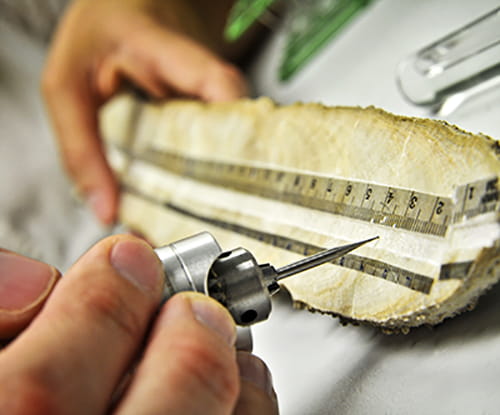Location: Geoscience Building, Room 107,
500 Yates St., Arlington, TX 76019
Mailing address: P.O. Box 19049
Phone: 817-272-2987
Fax: 817-272-2628
Email: ees@uta.edu
Department of Earth and Environmental Sciences
WELCOME TO UTA EARTH & ENVIRONMENTAL SCIENCES
The UTA Department of Earth and Environmental Sciences will prepare you for a rewarding career with our innovative education and world-class research programs. These programs are led by highly esteemed faculty and conducted in top-notch facilities which equip students for careers in industry, research, or academia. We have many specialized undergraduate degree programs that offer an excellent foundation in Earth and environmental sciences, and our graduate programs provide advanced training in a collaborative research environment which has the Carnegie Classification's highest rating: R1 Doctoral Universities – Very high research activity. Research and education go hand-in-hand and all students are encouraged to become active in research early in their academic careers.
Undergraduate Degree Programs
Majors
Bachelor of Science in Geology (Professional)Bachelor of Science in Geology (Environmental Science)
Bachelor of Science in Geology (Engineering Geology)
Bachelor of Science in Environmental Science
Bachelor of Arts in Geology (General)
Bachelor of Arts in Geology (Geographic Information Systems)
Bachelor of Arts in Geology with Composite Science Teacher Certification (UTeach)
Graduate Degree Programs
Master's Programs
Master of Science in Environmental and Earth Sciences (Environmental Science Option)
Master of Science in Environmental and Earth Sciences (Geoscience Option)
Master of Science in Environmental and Earth Sciences (Environmental Science Professional Option)
Master of Science in Environmental and Earth Sciences (Petroleum Geoscience Option)
PH.D. Program

Research Areas
• Sustainability • Geochronology • Geohazards • Tectonics and Paleoclimate • Climate Change and Impact • Nano-Petrophysics • Environmental Geochemistry • Environmental Health • Environmental Chemistry • Biostratigraphy • Low Temperature Geochemistry
News
Helpful Student Links
ADMINISTRATION
Dr. Arne Winguth
Professor and Chair
817-272-2977
awinguth@uta.edu
Dr. Majie Fan
Associate Professor and Associate Chair
817-272-9092
mfan@uta.edu